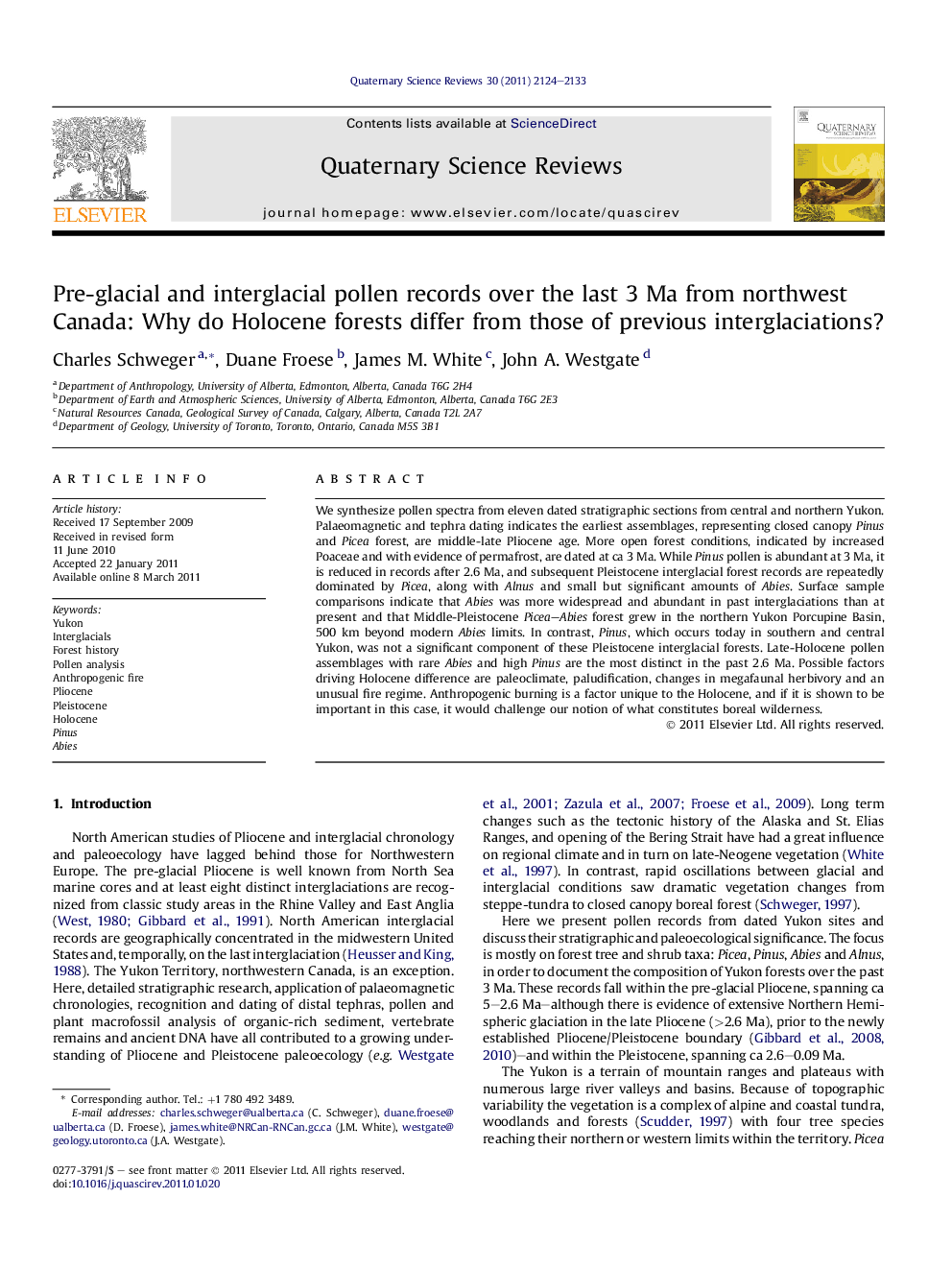| Article ID | Journal | Published Year | Pages | File Type |
|---|---|---|---|---|
| 4735864 | Quaternary Science Reviews | 2011 | 10 Pages |
We synthesize pollen spectra from eleven dated stratigraphic sections from central and northern Yukon. Palaeomagnetic and tephra dating indicates the earliest assemblages, representing closed canopy Pinus and Picea forest, are middle-late Pliocene age. More open forest conditions, indicated by increased Poaceae and with evidence of permafrost, are dated at ca 3 Ma. While Pinus pollen is abundant at 3 Ma, it is reduced in records after 2.6 Ma, and subsequent Pleistocene interglacial forest records are repeatedly dominated by Picea, along with Alnus and small but significant amounts of Abies. Surface sample comparisons indicate that Abies was more widespread and abundant in past interglaciations than at present and that Middle-Pleistocene Picea–Abies forest grew in the northern Yukon Porcupine Basin, 500 km beyond modern Abies limits. In contrast, Pinus, which occurs today in southern and central Yukon, was not a significant component of these Pleistocene interglacial forests. Late-Holocene pollen assemblages with rare Abies and high Pinus are the most distinct in the past 2.6 Ma. Possible factors driving Holocene difference are paleoclimate, paludification, changes in megafaunal herbivory and an unusual fire regime. Anthropogenic burning is a factor unique to the Holocene, and if it is shown to be important in this case, it would challenge our notion of what constitutes boreal wilderness.
